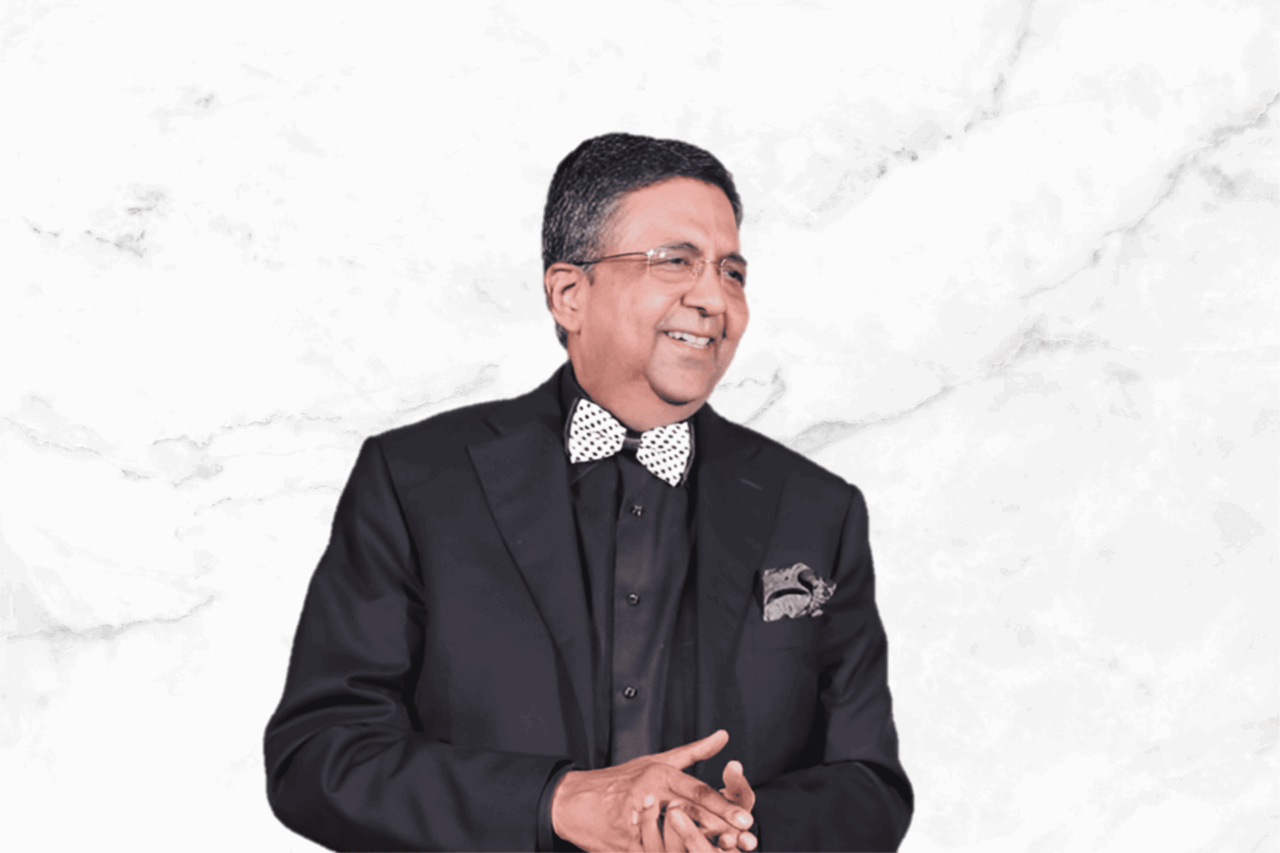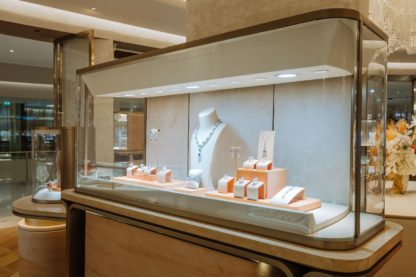In this exclusive interview, Alexander Chetchikov, President of the World Luxury Chamber of Commerce, sits down with Abhay Gupta, a visionary leader in India’s luxury industry and the author of The Incredible Indian Luxury Bazaar. As the founder of Luxury Connect, Luxury Connect Business School (LCBS), and a key architect in developing India’s luxury talent ecosystem, Gupta has played a pivotal role in shaping the country’s high-end retail landscape. With decades of experience bringing global luxury brands like Versace and Corneliani to India, he shares his expert insights on luxury education, market dynamics, and the evolving consumer mindset.
Alexander Chetchikov: As a key architect of India’s luxury talent ecosystem, how do you see the evolution of luxury education and workforce development in the country?
Abhay Gupta: India’s luxury industry has matured significantly over the last decade, and with it, the demand for skilled talent has grown exponentially. Earlier, luxury brands struggled to find professionals who understood the nuances of luxury customer experience, brand storytelling, and heritage management. Today, dedicated luxury business schools like Luxury Connect Business School (LCBS) are bridging this gap, offering specialized programs that blend global best practices with localized insights.
With the rapid expansion of luxury retail, hospitality, and experiential services, the need for a highly trained workforce has never been greater. The future of luxury education in India will be driven by experiential learning, digital transformation, and cross-cultural exposure. We are also seeing increasing collaborations between brands and academic institutions to develop tailored curricula, ensuring students are industry-ready from day one.
AC: Your book The Incredible Indian Luxury Bazaar explores India’s unique luxury market dynamics. What are the biggest challenges and opportunities for global luxury brands entering India today?
AG: India presents a paradox of immense opportunity and unique complexity. On one hand, we have a fast-growing high-net-worth individual (HNWI) segment, aspirational middle-class consumers, and a rich cultural heritage that aligns naturally with luxury. On the other, brands must navigate regulatory frameworks, high import duties, and the challenge of balancing exclusivity with accessibility.
The biggest opportunity lies in India’s ‘premiumization’ trend—where consumers are trading up for better quality, craftsmanship, and personalized experiences. Digital adoption is also accelerating luxury consumption, with e-commerce and social media shaping purchase decisions. However, for global brands, success in India requires a hyper-local approach—leveraging cultural cues, strategic pricing, and innovative retail formats.
AC: With over three decades in luxury retail, how have consumer expectations in India and the BRICS nations shifted, and what trends will define the future of luxury in these markets?
AG: Consumer expectations have evolved from merely owning luxury to experiencing it holistically. In the early 2000s, luxury purchases were largely status-driven. Today, particularly among younger buyers, there is a shift towards conscious luxury—where sustainability, craftsmanship, and personalization play a crucial role.
In BRICS nations, economic growth has fuelled demand for luxury, but each market has distinct consumer behaviors. While China has embraced digital luxury retail, India remains a high-touch, experience-driven market. Brazil and Russia lean towards classic luxury, whereas South Africa’s market is still emerging.
Key trends shaping the future include:
- Sustainable Luxury – Consumers demand ethical sourcing, eco-friendly materials, and responsible production.
- Digital & Phygital Experiences – A seamless integration of online and offline luxury shopping.
- Personalization & Bespoke Services – The desire for unique, one-of-a-kind pieces.
- Experiential Luxury – Travel, wellness, and immersive brand experiences driving engagement.
Brands that align with these shifts will be the ones leading in the next decade.
AC: As a luxury thought leader, what strategies do you recommend for Indian luxury brands to compete on a global scale while maintaining their cultural authenticity?
AG: Indian luxury brands have a rich legacy of craftsmanship, heritage, and artistry, which gives them a competitive advantage globally. However, scaling internationally requires a strategic approach:
- Brand Positioning & Storytelling: Indian brands must leverage their heritage while adapting to global tastes. The narrative should go beyond ‘Made in India’ to ‘Designed for the World.’
- Product Excellence & Innovation: Quality should meet or exceed global luxury standards. Design innovation, material excellence, and exclusivity will define success.
- Selective Global Expansion: Targeting key fashion capitals through pop-ups, collaborations, and digital platforms before setting up physical stores.
- Luxury Collaborations: Partnering with international designers or brands to enhance credibility and expand reach.
- Customer Experience & Personalization: Adopting cutting-edge digital strategies while retaining the artisanal, handcrafted essence of Indian luxury.
Several Indian brands—be it in fashion, jewelry, or spirits—are already making their mark. The key is to stay authentic while adapting to global consumer preferences.
AC: You’ve played a pivotal role in bringing international luxury brands like Versace and Corneliani to India. What key factors determine the success or failure of a luxury brand’s market entry in India?
AG: Entering India’s luxury market is both an exciting and challenging endeavor. Several factors determine a brand’s success or failure:
- Right Market Entry Model: Whether through a joint venture, franchise, or direct investment, choosing the right structure impacts brand control, speed of expansion, and profitability.
- Pricing Strategy: With high import duties, brands must find ways to ensure competitive pricing while maintaining exclusivity. Strategic local sourcing and ‘India-specific’ pricing models help.
- Retail Location & Experience: Store placement is critical—luxury thrives in high-end malls, flagship boutiques, and experience-driven retail spaces.
- Cultural Sensitivity & Localization: From marketing campaigns to product offerings, adapting to local tastes is crucial while maintaining brand DNA.
- Omnichannel Strategy: A mix of flagship stores, online platforms, and social commerce ensures wider reach and engagement.
- Long-term Commitment: India is a long-term play. Brands must be patient, investing in brand-building rather than expecting immediate returns.
Luxury brands that successfully integrate these factors have managed to create a loyal customer base, while others who misread the market have struggled.
Thank you, Abhay!
As India cements its position as a key player in the global luxury market, Abhay Gupta’s insights highlight the delicate balance between heritage and modernity, exclusivity and accessibility. His strategic vision underscores the importance of education, innovation, and cultural authenticity in driving the next wave of luxury growth. With a rapidly evolving consumer base and increasing global interest in Indian craftsmanship, the future looks promising for both homegrown and international luxury brands in the country. Through continued collaboration, innovation, and a keen understanding of market nuances, India is poised to become a dominant force in the luxury landscape.
To gain more insights into the luxury industry, visit our expert articles and interviews: https://worldluxurychamber.com/category/expert-articles-interviews/





